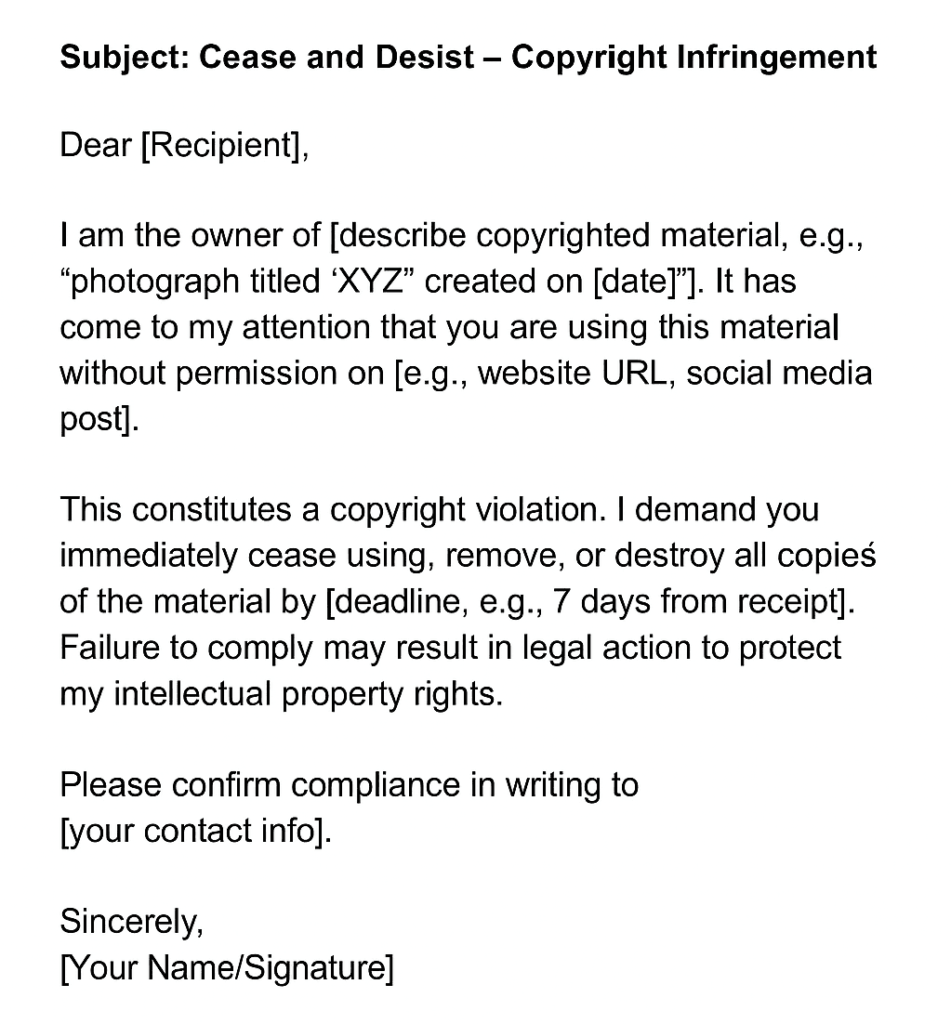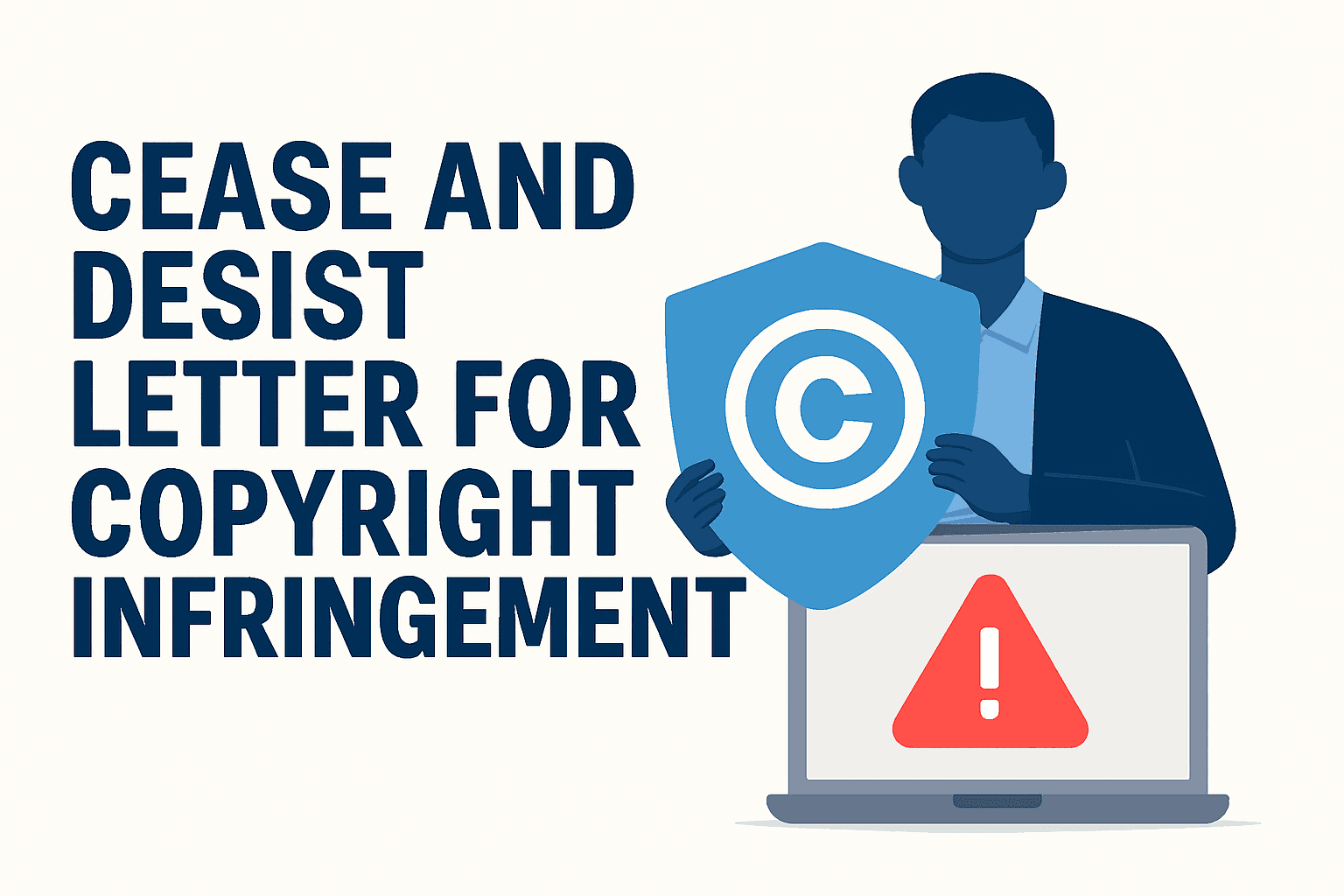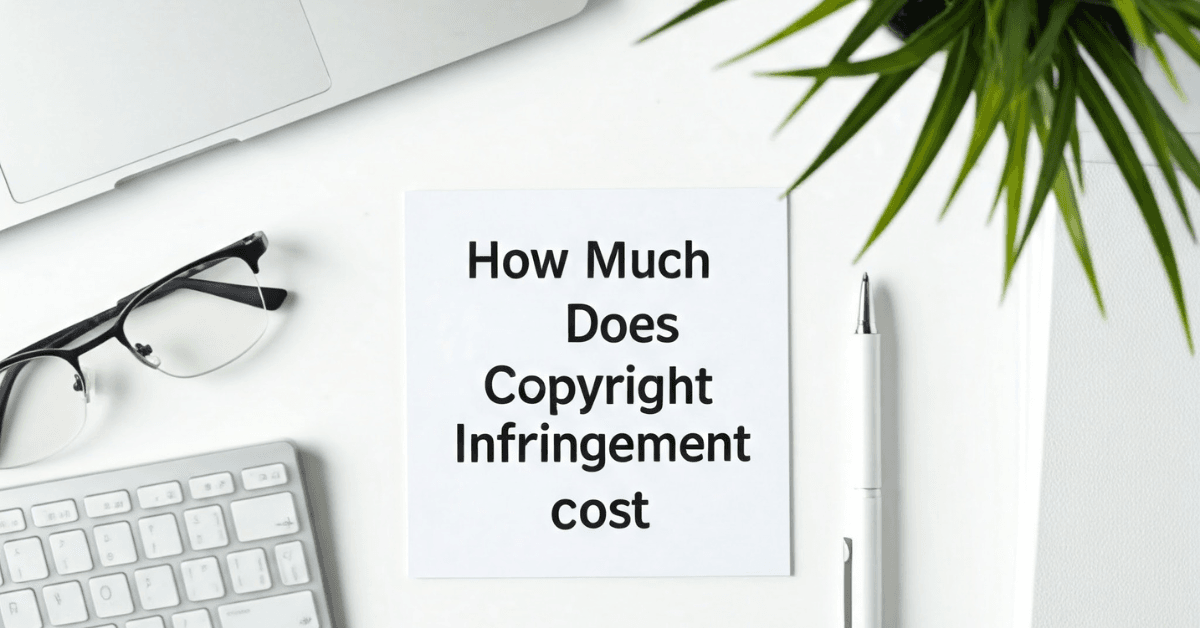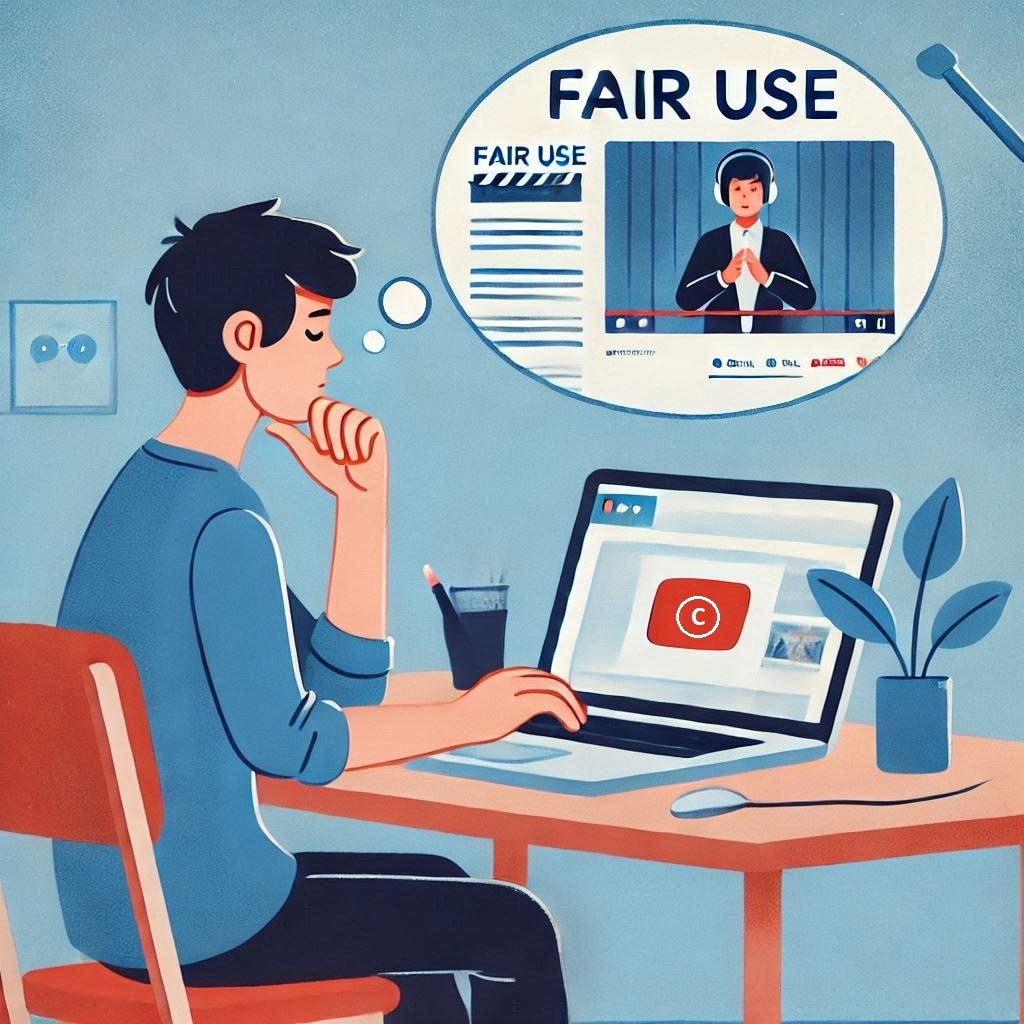Protecting your creative work is more important than ever in the digital age. Whether you are a photographer, writer, designer, or business owner, unauthorized use of your copyrighted material can be frustrating and financially damaging. A cease and desist letter for copyright infringement is one of the most effective legal tools to stop such misuse.
This guide explains everything you need to know — from how to write and send a cease and desist letter to providing a free and editable template you can use right away.
What is a Cease and Desist Letter for Copyright Infringement?
A cease and desist letter for copyright infringement is a formal notice sent to someone who has used your copyrighted material without permission. It demands that the infringer stop using the material and remove any existing copies immediately.
This letter serves as a copyright infringement notice, protecting your ownership under laws such as the Digital Millennium Copyright Act (DMCA) in the United States. While it is not a lawsuit, it warns the recipient that legal action may follow if the infringement continues.
For example, if a blogger copies your article or a company uses your photograph on their website without consent, you can send them a DMCA cease and desist letter requesting removal of the content.
Using a copyright infringement cease and desist template ensures your message is clear, professional, and legally sound.
When Should You Send a Cease and Desist Letter?
You should send a cease and desist letter as soon as you confirm that your work has been used without authorization. Common scenarios include:
- Someone copying your images, videos, or blog posts.
- Unauthorized sharing of your software, eBook, or music.
- Social media accounts using your creative work without credit.
Before sending the letter, make sure to verify ownership and gather evidence — such as timestamps, registration numbers, or screenshots.
If the matter involves large-scale commercial use or international infringement, consulting a lawyer is recommended to ensure your intellectual property rights are fully protected.
A cease and desist letter for online copyright infringement is particularly useful when dealing with websites or digital platforms.
How to Write a Cease and Desist Letter for Copyright Infringement?
Writing a clear and professional letter is crucial to achieving results. Here’s a simple step-by-step guide on how to write a cease and desist letter for copyright:
- Header: Include your full name, address, and contact details, along with the date.
- Recipient Details: Add the name and address (or email) of the infringer.
- Statement of Ownership: Prove that you own the material. Include details such as the title, creation date, or registration number.
- Description of Infringement: Specify how and where your work was used without permission. Example: “My photograph titled ‘Sunset View’ was used on your website www.example.com without consent.”
- Demand to Stop: Clearly ask the recipient to remove the content and stop using it.
- Deadline: Give a specific timeframe for compliance (typically 7–14 days).
- Consequences: Mention possible legal action if the issue isn’t resolved, but keep the tone firm and professional.
- Signature: Sign the letter as the copyright owner or through your legal representative.
This copyright law demand letter should be polite yet assertive. Avoid aggressive or emotional language — it’s a legal document, not a personal message.
Free Cease and Desist Letter Template for Copyright Infringement
Below is a free cease and desist letter template for copyright infringement you can customize:
[Your Name/Company Name]
[Your Address]
[City, State, ZIP Code]
[Email Address]
[Date]
[Recipient’s Name]
[Recipient’s Address]
Subject: Cease and Desist – Copyright Infringement
Dear [Recipient’s Name],
I am the owner of [describe the copyrighted material, e.g., “the photograph titled ‘Desert Mirage’ created on January 15, 2023”]. It has come to my attention that this material is being used without my permission on [insert website, platform, or publication name].
This use constitutes a copyright violation. Accordingly, I demand that you immediately cease the use and remove all instances of the material within [number] days of receiving this letter. Failure to comply may result in legal action to enforce my intellectual property rights.
Please confirm in writing that you have complied with this request by [date].
Sincerely,
[Your Name / Signature]
You can edit this letter to include specific details about your situation.
Sample Cease and Desist Letter for Copyright Infringement
Here’s an example based on the above template:

How to Send a Cease and Desist Letter for Copyright Infringement
Once your letter is ready, send it through a reliable method that provides proof of delivery. Options include:
- Certified mail: Offers legal proof the letter was received.
- Email: Faster delivery; ensure you request a read receipt.
- Both: For stronger documentation.
Keep copies of everything — the letter, delivery receipts, and any correspondence. If the infringer ignores your legal letter for copyright violation, consult a lawyer to explore formal legal action or a DMCA takedown notice.
What Happens After Sending the Letter?
After sending a DMCA cease and desist letter, one of three outcomes typically occurs:
- The infringer complies and removes the material.
- They respond and negotiate usage rights or credit.
- They ignore the letter — in which case, legal escalation or a DMCA takedown may follow.
Always document every step to strengthen your position if you need to take the matter to court.
Tips for Success and Common Mistakes to Avoid
Tips:
- Be specific and provide clear evidence of infringement.
- Keep your tone professional and neutral.
- Set a realistic deadline for compliance.
- Save all records for future reference.
Common Mistakes:
- Sending a letter without verifying ownership.
- Using threatening or emotional language.
- Ignoring local or international copyright differences.
These steps help ensure you are effectively protecting your intellectual property rights while maintaining professionalism.
Conclusion
A cease and desist letter for copyright infringement is a powerful, cost-effective way to protect your creative work before resorting to legal action. It helps you assert your rights, request immediate removal of infringing material, and prevent future misuse.
Use the free template provided above or consult a lawyer if your situation involves large-scale or repeated infringements.
Protecting your intellectual property today ensures your creative work remains yours tomorrow.
Frequently Asked Questions (FAQs)
It’s a legal notice requesting someone to stop using copyrighted material without permission and remove existing copies.
No, it’s not a court order. But it serves as a strong warning and can be used as evidence if the matter escalates to legal action
If ignored, you can escalate the matter by filing a DMCA takedown request (for online content) or pursuing legal action through a copyright infringement claim.
A DMCA letter specifically targets online infringement and can lead to removal of content by platforms or hosts.
Not necessarily. You can write and send one yourself using a template. However, if the infringement is complex or international, consulting a lawyer is recommended.
Include your contact details, proof of ownership, a description of the infringement, a demand to stop, a deadline, and a warning of possible legal action.
Yes. Email is fast and traceable. For added formality and proof, send it via certified mail as well.




